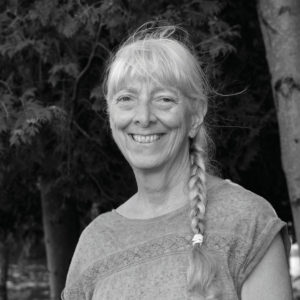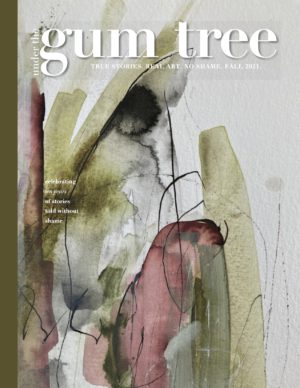Ruth Ann Dandrea

Ruth Ann Dandrea is a freelance writer whose essays have appeared in Prairie Schooner, Weber Studies, Adirondack Life, Rethinking Schools, and other publications. She has published poetry and short fiction in literary magazines, and is co-author of a book on women’s kayaking, titled WOW: Women on Water, which was named the Adirondack Center for Writing’s Nonfiction Book of 2012.
All of the stories feel centered around a then and a now. If “then” and “now” doesn’t work, maybe a safe space and a place you need to be safe from? What are the ones in your story? Was that intentional or did it come up naturally in the story?
The story “Maybe October” is told in the now with some mythical then that is hoped for. Maybe it is a remembered then implicit in the narration. Maybe it is both with a difficult now suspended between two perceived better thens. I did not plan for this. It just happened.
Building off that, how did this story come together for you?
From the first draft to final draft, did you feel a sense of personal growth, beyond just completing the story?
Since childhood I have fancied myself a fiction writer. To that end, I have, for some twenty years now, pushed myself to write a short story a month—good or bad—words on paper. “Maybe October” began as an attempt to come up with an idea for an October story. But the “maybes” took over. When the piece came to fruition and I was about to slip it into my short story folder, I realized it wasn’t one, it never found that moment to leap from fact into fiction. At first I was disappointed, but then I discovered that this still was a story, a different kind of story for me, one telling personal, rather than universal, truths. I think submitting my work as creative nonfiction took a different kind of courage, resulting in growth.
What draws you to creative nonfiction as a genre?
More and more—and maybe it is age—I want to say what I feel, think, believe. To say it as purely and beautifully as I can, without worrying about plot, character development, or the story going somewhere. True words on plain paper. Creative nonfiction accommodates this need. It lets a writer combine prose and poetry and even allows for a bit of fiction tossed in. A wonderful mix!
This is a very simple question, but one I am extremely curious about: How did you land on this form, a series of questions, as the way to tell this story?
The answer is also very simple: I was trying to conjure a story, simply listing ideas for myself to ponder, but then the ideas seemed to transmute themselves into story. Rather than choose one, they said, keep us all, make us the story. So I did.
How did you know which questions to go with and which to cut? What was that process? Was there a lot, initially, or a little?
I write a little bit each morning, rewrite the next morning and add on, and continue that process until I feel an ending. I fix stuff here and there, but I rarely rewrite whole pieces, I don’t think I know how to do that. As a result, my stories either work or they don’t. But I write a lot of them.
I don’t begin until I have an opening I can love and I just follow along. The majority of the rewriting of this piece came from advice given by the Under the Gum Tree editor with the careful eye who helped me shape the piece into something for readers other than myself. For that help, I am grateful.




